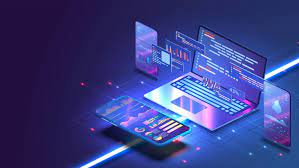In the realm of document recognition, MRZ readers (Machine Readable Zone readers) are vital tools that ensure the seamless extraction of encoded information from identity documents. These devices, which scan the standardized zones on documents like passports and visas, are increasingly being used to enhance the accuracy and efficiency of identity verification. As global travel, financial transactions, and healthcare systems grow more interconnected, the role of MRZ readers in streamlining document recognition processes has become more significant than ever.
The primary function of an MRZ reader is to decode the information contained in the machine-readable zone of a document. This zone, typically located at the bottom of a passport’s data page or an ID card, contains crucial details such as the holder’s name, nationality, birth date, and document number. MRZ readers quickly interpret this information and convert it into a digital format, which can then be cross-referenced with databases or stored for record-keeping. The automation provided by MRZ readers reduces the time spent on manual data entry and lowers the risk of human error, ensuring that document verification processes are as fast and accurate as possible.
For border control agencies, MRZ readers are indispensable. With millions of travelers crossing borders every day, ensuring the authenticity and accuracy of travel documents is paramount. MRZ readers allow customs and immigration officers to swiftly verify passports, minimizing wait times while improving security. In many cases, these readers are integrated into automated border control systems, such as e-gates, which further reduce the need for human oversight while enhancing the reliability of the screening process. By automatically comparing the information extracted by the MRZ reader with visa requirements and watchlists, these systems help prevent illegal entry and other security threats.
In the financial sector, the ability to verify a customer’s identity quickly and accurately is crucial. MRZ readers play an essential role in this process by enabling financial institutions to scan and verify government-issued documents. This is especially important for meeting KYC requirements, where institutions are required by law to verify the identities of their customers. MRZ readers help streamline this process, ensuring that the data extracted from documents is accurate and compliant with regulatory standards. This efficiency not only reduces the time taken to onboard new customers but also enhances fraud prevention by detecting forged or altered documents.
Healthcare is another sector that benefits from the use of MRZ readers. As medical facilities increasingly adopt digital systems for patient management, verifying the identity of patients becomes a critical aspect of ensuring the accuracy and security of medical records. By incorporating MRZ readers into patient check-in processes, healthcare providers can quickly scan passports or ID cards to confirm a patient’s identity. This not only speeds up administrative tasks but also reduces the risk of errors in sensitive medical data, ensuring that the right treatment is provided to the right patient.
One of the key advantages of MRZ readers is their ability to integrate with other technologies, such as biometric systems and optical character recognition (OCR). When combined with facial recognition or fingerprint scanning, MRZ readers provide an additional layer of security, ensuring that the individual presenting the document is indeed the person identified by the MRZ data. This multi-factor authentication is particularly useful in high-security environments, such as airports or financial institutions, where accurate identity verification is crucial.
As technology continues to advance, the role of MRZ readers in document recognition systems is likely to grow even further. Future iterations may incorporate more sophisticated features, such as real-time fraud detection, enhanced biometric capabilities, and the ability to scan a wider variety of document formats. These developments will make MRZ readers even more versatile and reliable, ensuring that they remain a cornerstone of document recognition systems for years to come.
In conclusion, MRZ readers are a critical component of modern document recognition systems. Their speed, accuracy, and ability to handle standardized information make them indispensable in industries that require secure and efficient identity verification. Whether used in border control, finance, or healthcare, MRZ readers play a crucial role in enhancing the efficiency and security of document recognition processes.








